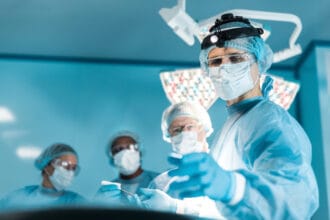Managing healthcare costs has become increasingly challenging, particularly when considering the significant investments involved. For instance, in 2018, the UK dedicated 9.6% of its entire GDP to healthcare, amounting to over £214 billion. A considerable portion of this expenditure was allocated to acquiring essential assets such as medicines, clinical supplies, and medical equipment.
While essential, this expenditure highlights the importance of efficiently managing these critical resources. In this article, we will explore the benefits of asset management software, like for healthcare facilities. Exploring how it can reduce expenses, enhance service delivery, improve patient care and more.
1. Improved Equipment Availability
Asset management tools ensure that medical equipment is always ready, significantly cutting down on downtime. By closely monitoring maintenance schedules and usage, these systems help medical facilities prevent unexpected failures. Additionally, they ensure that the essential tools for patient care are operational, keeping operations smooth and reliable.
2. Cost Reduction
By offering a comprehensive overview of how resources are utilized, they can identify opportunities to reduce costs. For example, it can help to pinpoint underused items, optimize procurement practices, and avoid the financial burden of emergency repairs or replacements. This strategic approach can lead to significant savings, allowing funds to be allocated more effectively toward patient care or facility improvements.
3. Enhanced Operational Efficiency
As these tools can automate the tracking and handling of medical equipment and supplies, they can streamline administrative tasks and free up staff time. This efficiency allows healthcare providers to focus more on patient care and less on manual inventory checks and tracking. As staff can quickly locate and deploy the necessary equipment, it can also help with improved operational efficiency and faster response times.
4. Increased Asset Lifespan
Regular maintenance and timely repairs facilitated by these systems can prolong the usable life of supplies. By scheduling preventative maintenance and keeping track of repair histories, these tools ensure each piece of equipment is well-maintained, preventing minor issues from becoming major setbacks. This careful overview not only saves money in the long run but also ensures everything is reliable for patient treatments when needed.
5. Regulatory Compliance
Healthcare facilities operate under strict regulations that require meticulous record-keeping for maintenance, calibration, and usage. These tools can help to automate these processes, making it easier to maintain compliance with standards and regulations. Along with helping facilities to be compliant to avoid penalties, it also ensures that the facility meets the highest standards of patient care and safety.
6. Inventory Management
In healthcare, having what you need when you need it can make all the difference. These solutions are able to give you a clear picture of what supplies are on hand at any moment, helping to avoid having too much or, worse, running out of essential items. Plus, this real-time tracking helps keep everything running smoothly, ensuring no patient care is delayed because something is out of stock or hard to find.
7. Data-Driven Decision Making
Asset management software turns data into actionable insights, offering a clear view of how supplies are being used. This empowers organizations to make well-informed decisions about updating or replacing the infrastructure, as well as tweaking maintenance schedules to keep everything in top working order.
8. Theft and Loss Reduction
These tools play a key role in safeguarding against the loss or theft of valuable infrastructure. By keeping detailed records of where each item is and tracking its movement, these systems help quickly pinpoint anything that’s missing, allowing for swift action to recover it.
9. Enhanced Patient Safety
At the heart of resource management is a commitment to patient safety. By ensuring that every piece of medical equipment is available and in perfect working condition, these tools support high-quality patient care. Regular maintenance and calibration are fundamental, especially for critical diagnostic and treatment devices, reducing the likelihood of errors and bolstering patient safety.
10. Sustainability
Implementing these tools can also lead to more sustainable operations. By optimizing the use and extending the life of medical equipment, facilities can significantly reduce waste and energy consumption. Efficient asset management not only minimizes the environmental impact but also supports the facility’s broader sustainability goals, ensuring resources are used responsibly and effectively.
Conclusion
The use of asset management software in the healthcare industry is not just a trend; it’s a fundamental shift towards more efficient, cost-effective, and patient-centric operations. By embracing these technologies, medical facilities can ensure that they not only meet today’s challenges but are also prepared for the innovations of tomorrow.








